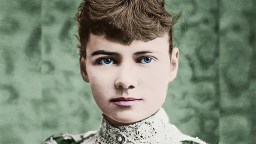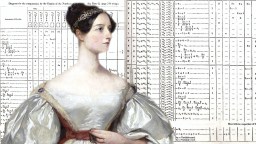This video is part of a series on female genius, in proud collaboration with 92Y’s 7 Days of Genius Festival.
While England’s Charles Darwin studied the foundations of biological science, America’s Maria Mitchell became famous for her celestial discoveries. She was our nation’s first professional female astronomer. Maria Popova explains: “In 1831 when she was still a teenager obsessed with stargazing she heard that the king of Denmark had offered a gold medal valued at 20 ducats, which was a lot of money at the time to the first person to discover a telescopic comet. It took her 16 years to master the science and the craft of observation, but she did become the first person and C1847T1 was known for 100 years Miss Mitchell’s Comet.”
Maria Popova: Maria Mitchell, whose first name is spelled like mine, MARIA but it's pronounced Maria not Maria, is the first recognized female astronomer in America and was the first woman elected unanimously to the American Academy of Arts and Sciences. In 1831 when she was still a teenager obsessed with stargazing she heard that the king of Denmark had offered a gold medal valued at 20 ducats, which was a lot of money at the time to the first person to discover a telescopic comet. It took her 16 years to master the science and the craft of observation, but she did become the first person and C1847T1 was known for 100 years Miss Mitchell's Comet. Later when she was hired to teach astronomy at Vassar, the newly established Vassar College, she was the first woman on the faculty, and according to the official Handbook of College Rules female students were not allowed to go outside after dark. This was a problem for the study of astronomy. Mitchell fought tirelessly to overturn not just this but not many other roles based on antiquated gender norms that held back women in science.
Later she was hired as the first woman to perform a non-domestic specialized skill for the U.S. federal government. She was paid $300 a year for her job as a computer of Venus for the United States Nautical Almanac. It was a very, very mathematically rigorous job that required her to perform very complex calculations that would predict the position of Venus in the sky for years to come. And in the days before GPS and satellites this is how sailors all over the world navigated the oceans. By the time she was 40 Mitchell had reached celebrity status as one of the most famous women in the world, which is a remarkable feat for a scientist. Even today we don't have many celebrity scientists. But she was most beloved for her extraordinary generosity of spirit that went along with her genius. She didn't much care for the accolades and the recognition and the celebrity but she went out of her way to mentor and help cultivate the talents of women in science, which required that she overcame her painful shyness in order to be a public speaker and a public figure and a role model and an educator, which she continued to be. She continued to teach right up until her death.




